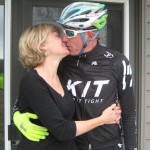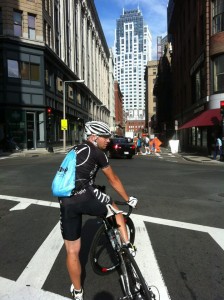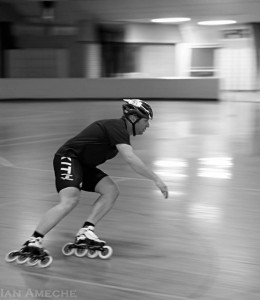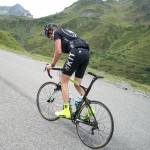By guest KIT blogger, Dave Andersen
 The off season for us roadies is in full swing. For me that means my weekly exercise consists of 6-7 hours (100 miles) of cycling, 3-4 strength training sessions, and 25-30 miles of walking…yes, walking. I walk year-round (my commute to work) although I do more weekend hikes and beach walks with my girlfriend this time of year. If we get some snow, these weekend walks will turn into cross country skiing. I’m a working man so I’m lucky if I can get outdoors on the road to cycle and when I can, it’s typically during the weekends. otherwise, the “cycling” is on the trainer…indoors. The strength work is a combination of weight lifting, core exercises, and stretching. It’s fun to see and feel the effects. As I get older, I consider it insurance for my body.
The off season for us roadies is in full swing. For me that means my weekly exercise consists of 6-7 hours (100 miles) of cycling, 3-4 strength training sessions, and 25-30 miles of walking…yes, walking. I walk year-round (my commute to work) although I do more weekend hikes and beach walks with my girlfriend this time of year. If we get some snow, these weekend walks will turn into cross country skiing. I’m a working man so I’m lucky if I can get outdoors on the road to cycle and when I can, it’s typically during the weekends. otherwise, the “cycling” is on the trainer…indoors. The strength work is a combination of weight lifting, core exercises, and stretching. It’s fun to see and feel the effects. As I get older, I consider it insurance for my body.
I know that some of my friends and competitors do less training, some much more. I think no matter how much you do, CONSISTENCY is the most important thing. Even though its the off-season for many of you, it’s important to find time in your day to incorporate fitness. Don’t let the short winter days get the better of your waist line because before you knowit, the warm weather will be back and you’ll be itching to PTHD with friends. Personally, I enjoy the spring and summer weeks when I can knock out 15 hours of cycling in the sunshine (who doesn’t?), but alas I live in New England and this sort of activity is not sustainable mentally, physically, or logistically. Thats why I think a periodized approach is the smartest for mind and body. The race season takes up half the year so it’s nice to have a BALANCED LIFESTYLE the other half. Go out and do activities you don’t normally do — hike, ski, skate, run, swim, dance, yoga, etc.
Finally, this is a good time of year to reflect and plan. What went right last season? How can I improve next season? Sometime in November or December, I like to put my upcoming plans and GOALS down on paper (or the computer now-a-days). I don’t obsess over weight but I do keep an eye on the scale to make sure the weight and body fat percentage stays manageable. The 2013 race season is on the horizon, it’s not too early to lay the foundation for it.
KIT and Happy Thanksgiving!
Dave
——————-
*Dave Andersen lives in Boston and works in the educational publishing business. He shares his passion for cycling and sport with a wide range of friends and competitors.


